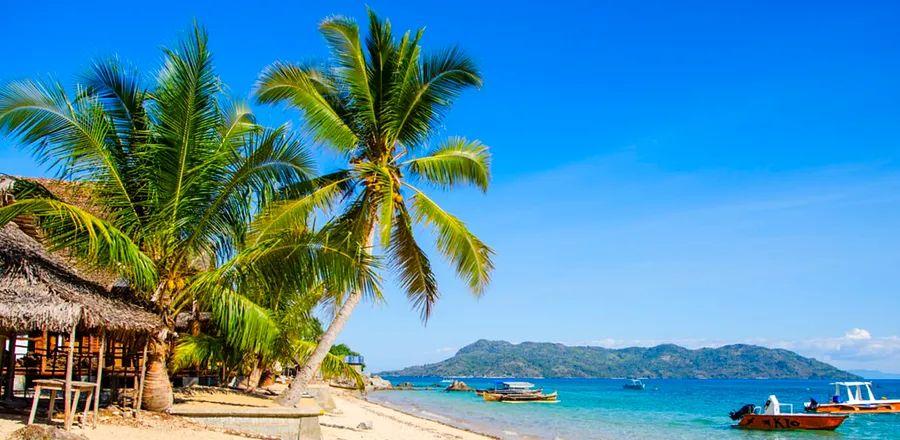3 Island Adventures That Benefit You and the Environment

Nowadays, many of us seek trips that create a positive impact on ourselves and the planet. For eco-conscious travelers, beaches are ideal for enjoying the best of both worlds, particularly as climate change poses challenges to our coastlines.
So the next time you plan your getaway, why not choose a destination where you can lessen your footprint or even contribute to environmental efforts? Engage in civic science while enjoying sandy beaches and beautiful water views. Here are three islands offering experiences centered on sustainability.
1. Discovering Madagascar’s Rich Biodiversity
Located off the southeastern coast of Africa, the wild and isolated island of Nosy Be has seen a surge in tourism following the introduction of direct flights from Europe in recent years. For visitors to this Madagascar destination, it feels like an untouched paradise for adventurers, featuring volcanic lakes, vibrant coral reefs, and a marine reserve perfect for snorkeling at Nosy Tanikely.
While Madagascar is renowned as one of the most biodiverse nations globally, it faces significant environmental challenges, with climate change expected to heighten occurrences of cyclones, flooding, and erosion. Sustainable tourism plays a crucial role in safeguarding the country's rapidly vanishing endemic species, approximately 90 percent of which are unique to Madagascar.
Make sure to visit the region's last remaining primary forest, the Lokobe Nature Special Reserve, which is home to the endangered black lemur and the vibrant Nosy Be panther chameleon. You might also check out the Nosy Komba lemur sanctuary on a nearby island. For a thrilling boat trip down the Mozambique Channel and an off-the-beaten-path tour in Ambanja, head to the mainland to explore an innovative cacao farming method known as agroforestry, which aids in preventing deforestation by restoring canopy cover.

Photo by Christian Graugart/Shutterstock
2. Spotting Sea Turtles in Grand Cul de Sac, St. Bart’s
The residents of St. Bart’s excel in fine dining, hosting lavish celebrations, and enjoying sunny days on their stunning white-sand beaches. Amidst the island's luxury yachts and high-end boutiques, sea turtles have been a part of Grand Cul de Sac Beach long before the arrival of tourists. On this island, you never know when a turtle might appear—and the need to protect their habitats has become increasingly important since Hurricane Irma struck in 2017.
Previously, Le Barthélemy Hotel & Spa collaborated with the Environmental Territorial Agency to safeguard sea turtle nurseries that inhabit the hotel’s beachfront nature reserve. Starting in March 2023, the hotel will introduce guided educational programs and interactive coral planting activities for locals and visitors, in collaboration with the environmental group Coral Restoration St. Barth. Participants will learn about turtles and other marine life within the coral reefs, as well as catch invasive species like lionfish.
During your stay on the island, be sure to explore the 650 acres of reefs, seagrass beds, and marine ecosystems within the rest of the nature reserve, managed by the Environmental Territorial Agency.

Photo by Eric Carlander/Shutterstock
3. Observing coral recovery in St. George’s, Grenada
This small island offers numerous chances to hike or drive through its untouched hills, rainforests, waterfalls, and nutmeg plantations. However, don't overlook the stunning coral reefs. At the 'Spice Isle,' scuba diving is part of the activities offered at Sandals Grenada resort, which has integrated lessons on marine life protection into its '40 for 40' sustainability efforts.
Last year, the Sandals Foundation partnered with the Grenada Coral Reef Foundation to educate Sandals guests and local communities on reef restoration, as Grenada's coastal ecosystems face challenges from pollution, overfishing, development, hurricanes, and coral bleaching—where corals lose their algae and turn white due to warming waters from climate change. This year, one of its tour options will teach participants how to help maintain the delicate underwater ecosystem through a technique called coral gardening.
Coral gardening tours introduce the 'Biorock' technique for reef repair, which uses low-voltage electrical currents to stimulate the growth of dissolved minerals that crystallize into the self-repairing white limestone visible on coral reefs and white-sand beaches. Through your diving mask, you can observe fellow divers as they descend into Grenada’s Molinere Bay, guided by a local marine biologist to plant coral seedlings into metal cages. Then, it’s your turn to immerse yourself among a vibrant array of fish.
If you opt for a bay excursion, don’t miss the Molinere Underwater Sculpture Park, the world’s first underwater sculpture park. Beneath the waves, you can marvel at the 15-ton concrete piece titled Vicissitudes by sculptor Jason deCaires Taylor, featuring numerous statues of children holding hands in a circle, with purple coral adorning one and bright orange sponges on another. This installation, established in 2006 to symbolize reef regeneration, provides a stable base for coral polyps to attach and grow.
Evaluation :
5/5



